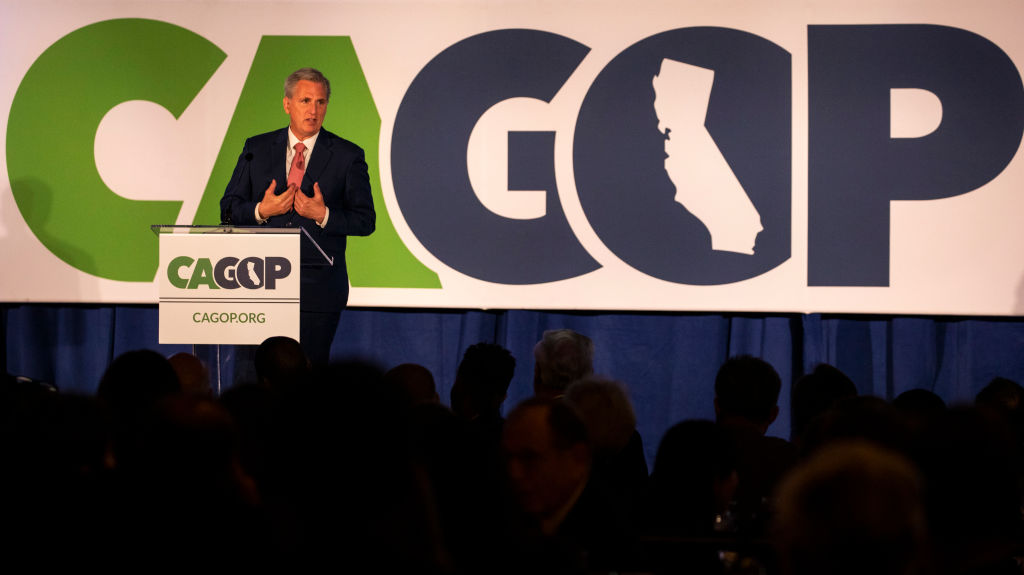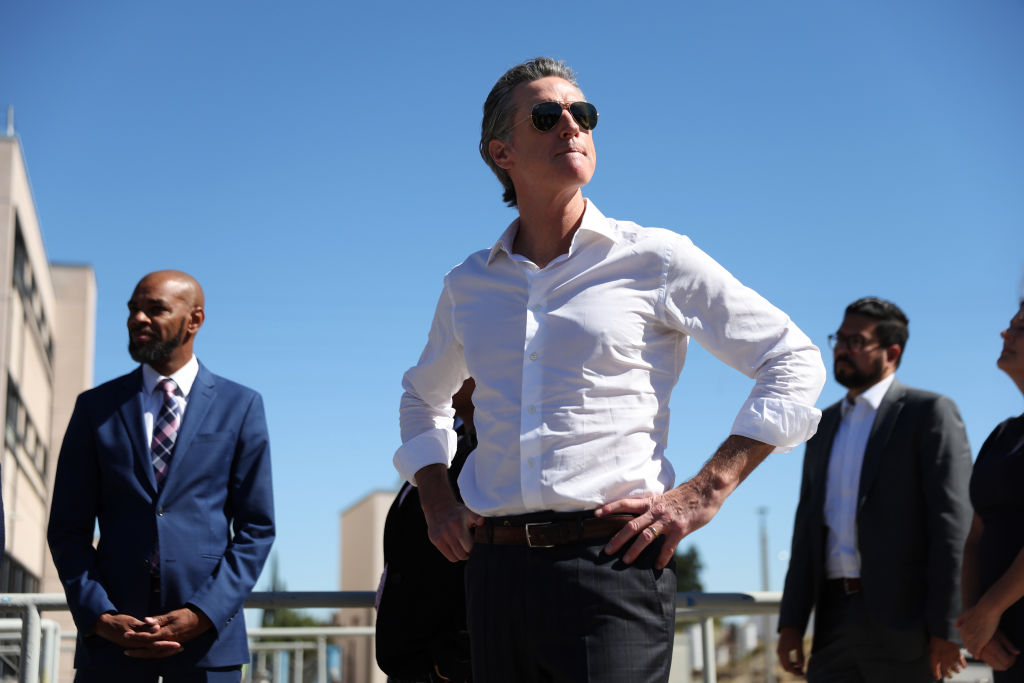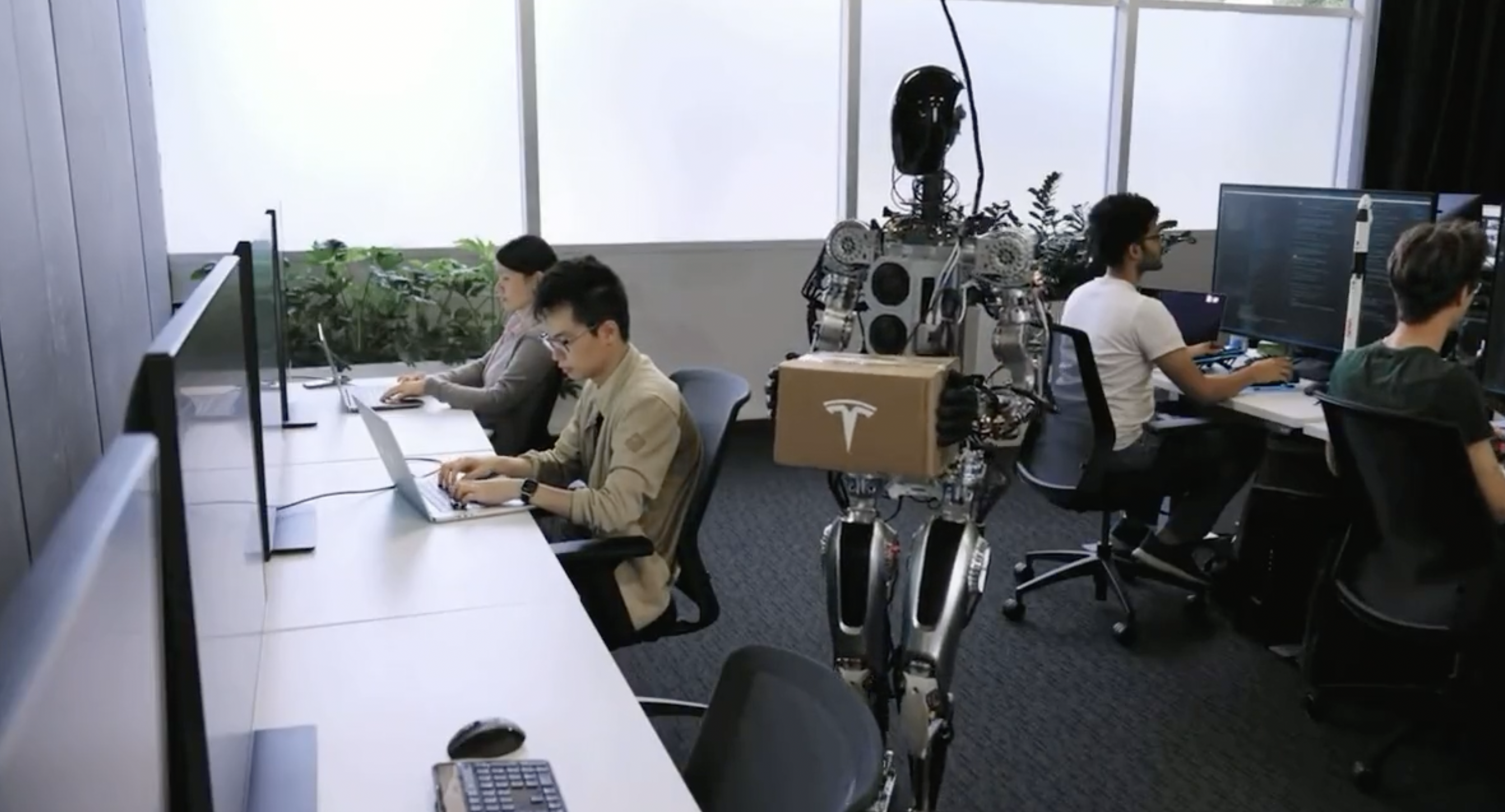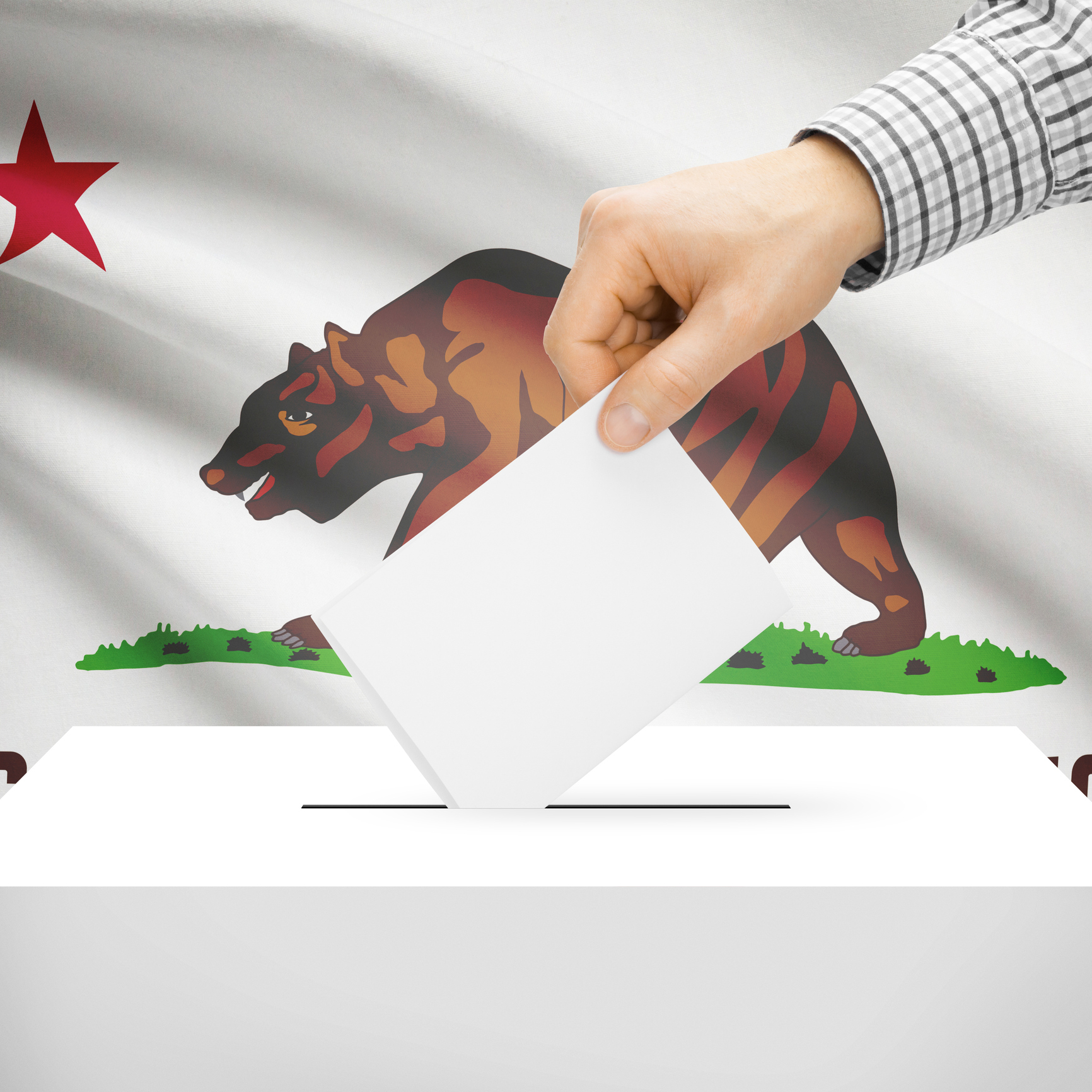When the armed forces serve a global corporate agenda, it’s no surprise that HR mandates are mission critical.
Vivek Ramaswamy and the Woke Culture War on Hindus
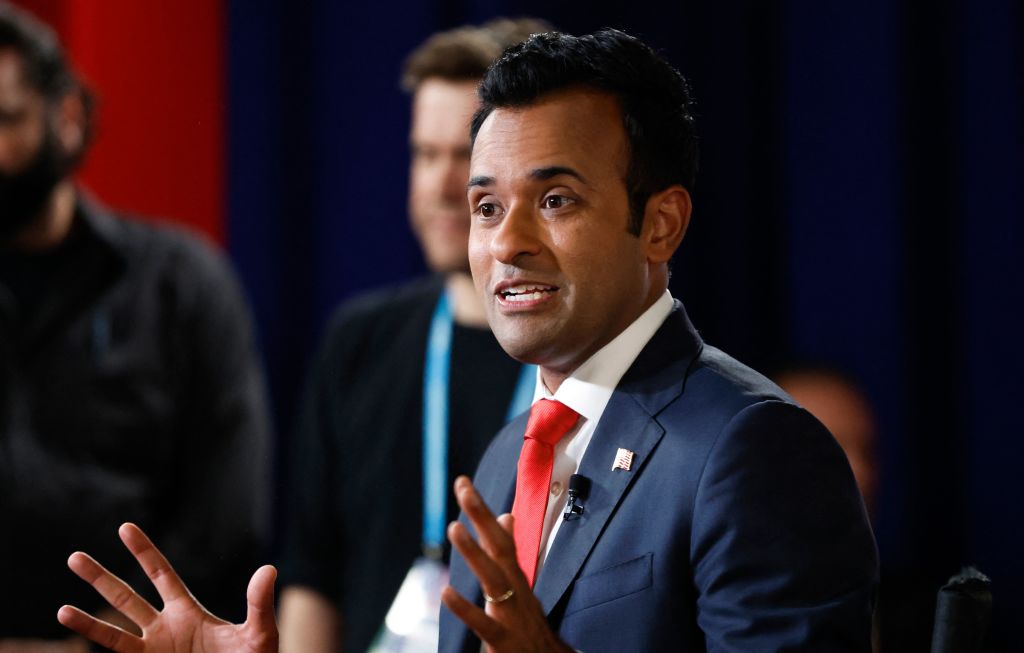
The presidential candidate stands against the Left's attacks on the ties that bind.
I wouldn’t have liked Vivek Ramaswamy a few years ago but I do now. To be fair to him, he was probably the same then, and so was I. He was a conservative (and still is), and I an academically-credentialed progressive (and like to think I still am). His conservatism is based around the idea, as he puts it in his new book, “that you are responsible for your own life.” I don’t agree with everything he says, but there are things he says that are undeniably meritorious and, dare I say it? True.
Vivek Ramaswamy and I have something else in common, which is that we are Hindu in America. Or should I say “Hindus”? The plural noun is somewhat more precise, because you don’t have to subscribe to the same exact beliefs or practices to “be Hindu.” He might lean toward a Ten Commandments monotheism kind of worldview, and I toward a polytheistic one. Neither differences nor similarities seem to diminish our ability to say, “I’m a Hindu.” There is no church or priesthood to judge us on it.
Ramaswamy calls himself a Hindu and so do I at a time when the word “Hindu” has been overwhelmingly defined to be synonymous with racial, religious, and caste supremacism, and the only way to exist as a Hindu is to perform, loudly, as an ever-apologetic, self-erasing, and worst of all, fact-denying Hindu.
There is a culture war on Hindus in America, and it is so deeply entwined with the bigger culture war in America today, that perhaps only the stunning, uncanny phenomenon of a self-professed Hindu vegetarian winning the support of Christians and omnivores could help us recognize the depths of the mess we are in.
I began writing about Hindu issues nearly 20 years ago. I was not yet a parent then. But I learned from other Hindu parents, bewildered ones, about middle-school World History lessons that were putting children through bizarre caste-oppression role-playing activities under the guise of teaching about Ancient India and Hinduism. This was long before the culture wars around classroom “interventions” into gender identity and racial privilege erupted in mainstream American society.
I had thought of the issue then as simply an understandable lag in the system in recognizing the liberal Hindu voice in the American multicultural dream. But now I perceive these past two decades as merely the start of a wider and more pernicious intrusion into home, family, and intergenerational harmony in America.
Hindu children were getting taught to hate their ancestors. From the outside though, it seemed as if the children of Hindu immigrants were living advertisements for the American Dream. But even as early as the time of the seventies or eighties cohort (there was virtually no immigration from India before 1965), parents sometimes shared helpless tales about the hostility of their children’s occasionally uninformed or ignorant teachers. To hear ignorant chauvinists tell Hindu children that the gods they and their parents worshipped were devils was not surprising, but the more “enlightened” response that followed was in some ways worse. Even as schools poured millions of dollars into recognizing multiculturalism and celebrating diversity, the curriculum doubled down on the demonization of Hinduism and the humiliation of American Hindu children.
A group of parents in California began organizing in 2006 to speak at official hearings and get history textbook content changed to reflect a reasonable understanding of ancient Indian civilizations. At the time, the Ancient India chapters were full of errors and colonial-age inanities (which in any other context would have been called “racist”). One textbook in North Carolina even had a photograph of Adolf Hitler in the Ancient India and Hinduism lesson, presumably tying in the Nazis’ dubious claim about their Aryan racial roots.
But what happened next was what started my journey of, if not quite being “mugged by reality,” at least fighting back against the denial of it. The academic establishment came down, like a ton of Taliban-type stones, to denounce Hindu parents as fascists and extremists.
In 2016, hundreds of Hindu children testified in Sacramento during a curriculum revision process about the inaccurate content their textbooks contained about Hinduism, India, and caste oppression. Child after child stepped up and spoke. Sixth graders of Indian-origin, and others, had to hear lessons about “Brahmins” and “Untouchables” that treated slogans and platitudes as historical facts.
But when parents, and a handful of professors (including me), asked for change, the academic orthodoxy dug in. What the doyens of South Asia Studies proposed instead was even more outlandish. There was no India before 1947, they said, so most references to “India” before that period should be removed and called “South Asia” instead. There was no “Hinduism” either, in their view, till some “Hindu Nationalists” began to cook it up in colonial times, so that word should be replaced with “Religion of Ancient India.”
References to the conquest of Northern Indian states by Islamic Turkic tribes should be changed to “expansion” into “Northern Indian plains.” The first Mughal Emperor Babur’s memoirs ought to be re-read to discover and celebrate nascent humanism. Something ought to be done to stop making it seem to children that Islam had come to South Asia from elsewhere. References to 9/11 had to be contextualized by teaching children that Islamic extremism was often a reaction to Hindu, Christian, and Buddhist nationalism.
The education establishment accepted this because these professors were, of course, experts. But a smaller group of academics started a public petition opposing these changes. We got over 25,000 signatures from around the world. Parents and community groups mobilized and protested. Some of these changes were walked back, but then, the scorched earth propaganda campaign against us began. A major U.S. newspaper published a hit job on my petition. A slew of articles appeared around the world claiming that “Hindu Nationalists” were trying to whitewash the brutal history of caste oppression in California textbooks.
In hearing after hearing in Sacramento during that heated summer of 2016, activists and academics professing progressive epithets and rainbow-diversity labels denounced immigrant Hindu parents, right in front of their small children.
Ironically, many of these parents being smeared as Hindu supremacists and extremists were not “upper caste.” Narendra Modi is not “upper caste.” A few years later, his government made a woman from one of the most historically disenfranchised communities the president of India. In the end, the curriculum did not erase the word “India.” Officials also accepted some of the changes Hindu parents were asking for in terms of the depictions of caste (after being opposed by academics and activists who saw this request as a whitewashing of caste-oppression): recognize the contributions made by “lower caste” Hindus to Indian civilization, including the fact that the two great Hindu epics, the Ramayana and Mahabharata, were written by non-Brahmin poets.
In the summer of 2020, Pulitzer-prize winning author Isabel Wilkerson wrote a book called Caste in which she compared the Indian caste system, American slavery, and Nazi Germany. I have never heard Wilkerson name any “castes” and which regions of India they are from, who their greatest kings and queens were, and who their ancestral deities are. I am not sure if she understands any Indian languages, or if she has spent significant time in Indian society. But her book was celebrated and promoted by Oprah Winfrey, who made news by sending copies to hundreds of CEOs even as news media began to report on an avalanche of caste discrimination allegedly taking place by upper-caste Indians in the United States. Especially Silicon Valley.
Charges of alleged discrimination by two Brahmin managers at Cisco against a Dalit (formerly described as “untouchable”) colleague made international news. For about seven years, the case made its way from inside Cisco and into the purview of the California Civil Rights Department. Finally, in the summer of 2023, the case against the two defendants was dismissed. It turned out the complainant who alleged discrimination for being passed up for promotion hadn’t actually applied for the position. And the candidate who got the job instead also happened to be Dalit.
All the same, the DEI experts, the California civil rights bureaucracy, and a host of academics and activists basically decided that legislation was needed, for the “disease” of caste had been brought to American shores by Indian immigrants. On August 28, 2023, the California State Assembly voted to pass SB 403, a bill advanced by Democratic Afghan-American State Senator Aisha Wahab, despite fervent opposition from many of her own Silicon Valley constituents. The bill supposedly bans caste discrimination, though opponents say such discrimination is already illegal according to current laws.
Supporters insist that, despite the Cisco case outcome, caste protections are necessary, though there is not one police complaint nor one case that proves that casteism is rampant in America. There is also the question of how one would even begin to figure out whose caste is higher or lower, “oppressed” or “oppressive” (or even what one’s “caste” is, especially for second- and third-generation Indians who do not even know or care). It appears that millions of people are now going to need education in what their “caste” is, how oppressive or oppressed it is, and how to fight that oppression. The bill currently awaits Governor Gavin Newsom’s signature.
Over the past few years, propaganda campaigns about Hindu nationalism and Modi and caste have had a profound effect on intergenerational ties within the Indian-American community. Hindu parents have started to lament that their children—for whom they worked hard in order to pay for expensive Ivy League schools—have turned into rabid haters of their ancestors and their ancestral traditions while in college (watch the video “Is Family the Latest Frontier for Wokeism?” here). This generational divide has played out not only on broader issues like Trump and Modi, but more pointedly on the issue of the caste legislation as well.
It’s been hard not to notice that the voices that would talk about “owning their caste privilege” and overcoming “fragility” came bearing the mark of American accents. These were self-identified “upper caste” South Asian American children, now grown up, denouncing their first-generation immigrant Indian parents for bringing casteism to America and failing to atone for it.
On the other side, most of the voices that said there was no caste problem in America except the problem that lobbyists and the Democrats were now trying to create, the voices that pleaded that their U.S.-born immigrant children did not even know their castes nor were they even likely to marry within their castes when they grew up, the voices which pleaded that SB 403 would permanently divide and destroy the community, were those of first-generation, Indian-accent-bearing, self-identified “lower caste” immigrants.
Vivek Ramaswamy says he is a Hindu. But he does not profess or partake in the theater of expiation now expected for being a Hindu, and a Brahmin, in the “South Asian” microcosm of America. That expectation is demanding. One academic, a self-identified Brahmin professor in Cambridge tweeted in 2020 that Brahmin lives don’t matter and white lives don’t matter (she added, “as Brahmins” and “as Whites” to each of these respectively, as if that made it any less bigoted).
Since Ramaswamy doesn’t prioritize identity politics, he has started to attract ugly epithets. A recent article in Slate has anointed him a “Hindu Nationalist.” Many twists and turns and conspiracy theories and dog-whistles are necessary to prop up this desiccated strawman, but the gist of the allegations is that Hindus and Christian Nationalists have a strategic alliance against Muslims. Zionists, unsurprisingly, are also included in this supposed war on Islam. There is also Brahmin privilege, which helped people like Ramaswamy’s parents become immigrants.
Democratic DEI experts have persistently claimed that upper-caste Hindus trick liberal whites into giving them diversity-quota jobs, and then discriminate against lower-caste Hindus who require quotas now in immigration, employment, and so on. That is the cornerstone of the claim. But almost every Indian in STEM that I know, regardless of “caste,” boasts about only one thing, and that is merit.
And every Indian immigrant from the sixties and seventies has stories of how little they came with, and Ramaswamy refers to it in the case of his parents too. India’s socialist-era foreign-currency restrictions from that period did not permit you to take money out of the country, even if you had it. Yet, the Slate article insinuates that U.S. immigration laws ensure only privileged people, such as Ramaswamy’s Brahmin parents, could migrate.
This multigenerational story is relevant. And I am glad Ramaswamy repeats it. Youth are taught endlessly today about the value of being a global citizen. The whole planet is one happy family of rainbow-colored perpetually-young activists. But progress is somehow orphaned in time and history. Identity in the Progressive vision exists across space but not across time. A wide-awake sea of youthful faces will smile and revolt against an eternally-oppressive past to ensure equity. The reality that everyone will grow old, and only the consolation of our children’s existence will grant us relief from mortality, is not a story in the “march of progress” rhetoric of today.
I read Ramaswamy’s Woke, Inc. last year when I realized somewhat reluctantly that my usual sources of social and political affairs content had ceased to deliver the kind of message I expected. Anti-war Congresswoman Tulsi Gabbard could now be seen only on Fox News. Corporate greed and the plight of the working class no longer seemed to be of interest to the “Left,” but had somehow become a key concern of the “Right.”
What I value most about Vivek Ramaswamy though isn’t economics, or maybe even politics. I don’t run businesses, nor do I even teach in the area. I hear my friends’ agitation about his climate change positions and such, to which I defer. But I am moved, and dare I say it, even inspired, by his generationally-anchored vision which I hope will become the center of a movement for cultural revival in this country now.
Intergenerational survival—tradition—is key to the culture war, including the dynamic that is playing out around Hindu parents and children. I have been researching the history of propaganda for my new book, and it is telling that all peak moments of mass propaganda, tyranny, and genocide have involved the targeting of intergenerational ties. Destroying tradition and the bonds between parents and children is the ultimate policy of “divide and rule,” not just the superficial ones across race, religion, gender, and so on. When we live with a sense of belonging in relation to our elders and our children (in the “vertical”), we are not going to be vulnerable to the propagandistic apocalyptism of any cause (the “horizontal”). We have something to live for, real things, our children, or those of our friends. We don’t need to buy a cause off the shelf and wait on doomsday.
Ramaswamy brings up generational issues, and stresses the importance of intergenerational continuity, as a possible salvation from the grip of Woke Capital, which waves the flags of BLM and Pride as it levels the world. What might such a vision look like? Ramaswamy has intuited that there is an older Hindu way, as also a Christian, or Jewish, or Muslim, or indigenous, or maybe even an older liberal-secular way (as opposed to the new “woke” rhetoric), rooted in honoring, or at least not destroying, intergenerational cultural flows.
His statement contrasting old religions like Hinduism and Christianity with what he calls the new religion of wokeness is a recognition of the war that is being waged on intergenerational integrity, on cultural continuity, on collective memory. Social media and schools have turned into sensory deprivation tanks that disorient subjects from the warmth and immediate presence of their own family members.
We often think of religions as communities that exist in space, but traditions also exist in time, and whatever we call “Hinduism” is really not one doctrine, creed, church, or faith, but really whatever is left of thousands of diverse micro-traditions inherited from elders by children. With modernization, migration, urbanization, and inter-caste marriages, both in India and the Hindu diaspora, these traditions are certainly becoming more fluid, and sometimes more diverse and colorful. But barring a central authority—it is a myth that Brahmins are the sole “custodians” of Hindu texts, and represents a projection of Protestant views about Catholic priests by colonial period German translators still kept alive by cynical politicians in India, some of whom routinely call Hinduism a disease that must be eradicated—Ramaswamy’s Hinduism is his own and mine is mine.
For American readers about to get hit by reams of words about “Hindu Nationalism” and “Brahmin privilege” to discredit Vivek Ramaswamy, I will just say that his own description of his ancestral village and family is important to understand. Brahmins are not the richest or most powerful community in India. In traditional times, they enjoyed social respect for valuing knowledge and living by a rigorous code that demanded austerity and a sense of honor.
And if, in modern times, their descendants have done well in America, as Ramaswamy has, there is at best a debate one might have about the broader sociological nature of privilege and obligation in the American Dream, and not the parody of social justice that has turned generations against each other now.
We need an America that puts a stop to the destruction of intergenerational harmony, and sets forth, with excellence as its guiding virtue, not just into the outer frontiers of space or the inner wonders of the cell, but into the cultural imagination that restores our sense of intergenerational empathy, or assurance that our breaths may one day end, but what we have used them for will live on as light and love in those of our descendants.
The American Mind presents a range of perspectives. Views are writers’ own and do not necessarily represent those of The Claremont Institute.
The American Mind is a publication of the Claremont Institute, a non-profit 501(c)(3) organization, dedicated to restoring the principles of the American Founding to their rightful, preeminent authority in our national life. Interested in supporting our work? Gifts to the Claremont Institute are tax-deductible.
The California GOP remains committed to its decline.
The birthplace of environmentalism was built through meticulous application of technology.
Don’t sleep on America’s Bad Dream Team.
Raising the minimum wage will accelerate the replacement of low-skilled workers by machines.
If California’s conservative vote went elsewhere, it could make a real difference.


